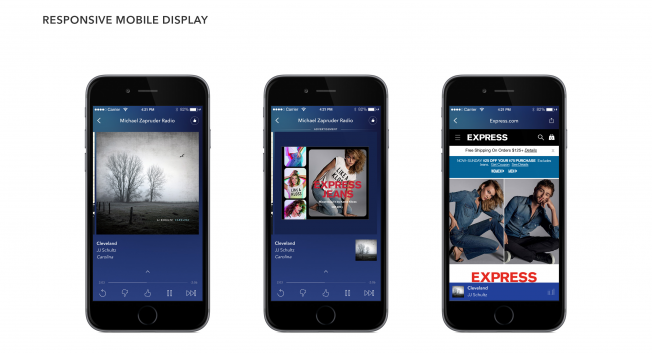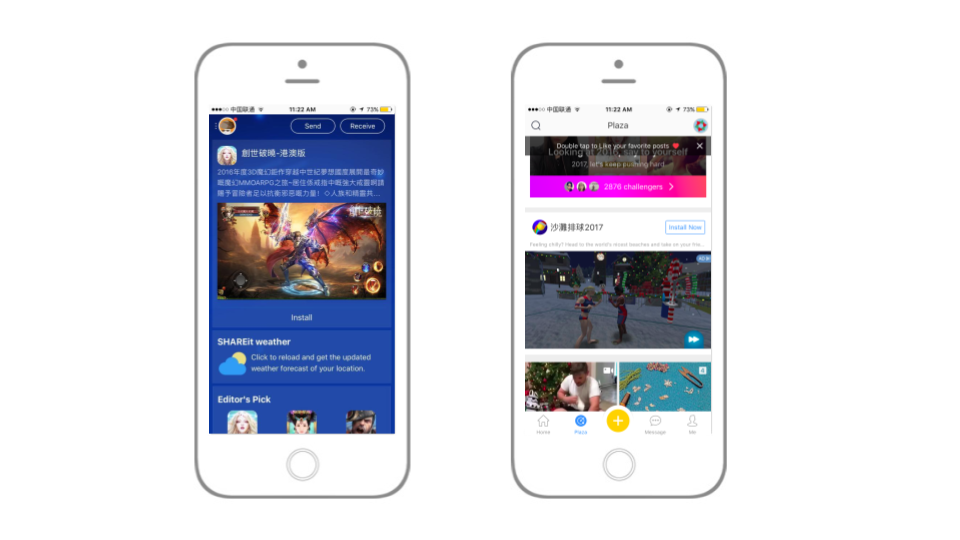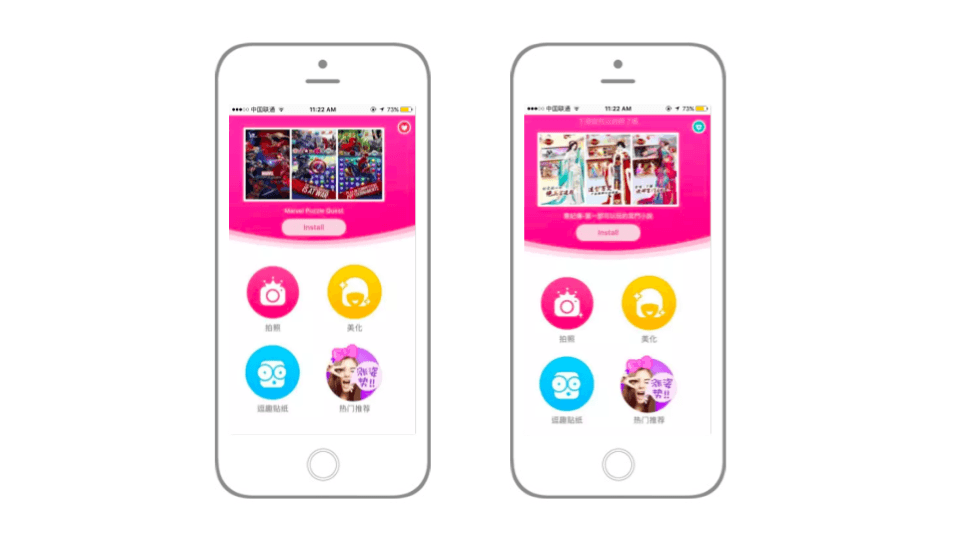
Image Credit: creatista / 123RF Stock Photo.
It’s not enough to just stuff a poorly-placed ad into your app and hope for the best. With trends like big data, artificial intelligence, and streamable videos catching on, developers now have a wealth of tools to choose from. Coupled with increased native ad engagement – 20 to 60 percent higher than traditional ads – there’s a world of higher-quality, less disruptive, and relevant ad possibilities.
Here are five strategies to maximize revenue through better ad performance.
1. Use creatives that actually work with your app. Your users will appreciate it
If you’re looking beyond banners, look to 15-second long videos, or interactive ads.
Fifty-two percent of mobile game developers say that video game ads provide the highest per-user revenue compared to other forms of in-game advertising, according to Zikai Fang, chief product officer of Mobvista. In the past year, he was devoted to Mintegral, Mobvista’s self-developed native and video ads mediation monetization platform.

Incentivize users to complete video ads by giving them access to more game content after completion. Image Credit: Pixabay.
In some apps, a video ad pops up before you’re able to redeem in-game cash or access more game content. It’s a way to advertise with actual incentives for users to complete the ad.
In fact, it’s possible that users welcome such ads, as it means they don’t have to pay actual cash. Zikai suggests that videos, when preloaded, can help avoid user frustration.
Developers should note that 71 percent of players choose video ads as their preferred way to access more game content, says Zikai.
Such new formats offer deeper engagement. Playable ads can serve as trials for users, resulting in higher eventual conversion rates if they download and enjoy the advertised app.
Now, more creative formats have also been successfully deployed. Pop-up videos can be a nuisance, but muted videos can lead to success. While the user listens to music, rather than displaying album art, advertisers can display videos or other ads without disrupting the user experience.

Pandora’s responsible mobile display. Image Credit: Pandora.
Other apps are catching on. Facebook ads were particularly strong in India and Southeast Asia, with high clickthrough rates. Now, they also offer automatic subtitles for those who won’t press the unmute button.
2. Don’t hard sell
What advertisers are really fighting for is time of the audiences they aim to target. With nearly 900 billion hours spent in apps in 2016, revenue from in-app ads and app stores has risen.
But tech-savvy audiences expect a seamless interface. And most think that good user experience and efficient monetization are at odds.
“If you open more ad positions in your app, there will be an impact on the user experience. However, if devs include fewer ads, they can’t monetize as efficiently,” Zikai concedes.
“There’s a sophisticated balance that you have to figure out.”

Spot the ads in the newsfeed. Image Credit: Mintegral.
Enter the native ad, embedded in an app’s newsfeed. Research shows that native ads would drive 63 percent of mobile display advertising revenue by 2020. The rise is driven by the fact that native ads slip past adblockers and also provide a non-disruptive experience based on gentle recommendations rather than intrusive hard selling.
3. Don’t write off banners yet: user data can help
Good news for mobile ad banners. Responsive ads used by Google and CNN use automatic banner resizing to standardize advertising campaigns across platforms. This results in visually appealing ads for users and a consistent image for brands.
The in-feed native ad becomes even more potent when coupled with user data. Spotify is doing this via collecting data like age, gender, location, and listening preferences. For example, if a user is listening to a power workout playlist, ads showing sportswear, energy drinks, or health products will appear in the user’s feed.
Camera360 believes in showing ads that are relevant. “We want to deliver the most user-related ads, and make them feel like ads are helpful and not interrupted,” Rui Gu, COO of Camera360, says.
To achieve that, Camera360’s team worked with Mintegral’s consultants on areas of monetization, design, and revenue optimization. This collaboration resulted in more accurately targeted ads for Camera360.

In the Camera360 app, the native splash features gaming apps exclusively targeted female users, from puzzles games to graphic novels. Image Credit: Mintegral.
Native splash ads – banners that appear after the app is launched – can also be meaningfully customized with data. Take photo-editing app Bestie: the sister product of Camera360. Through splash ads and a combination of other ad types targeted at women, Bestie monetized.
4. Use custom design for ads
To up your monetization game, consider using custom design to improve customer engagement and maintain good user experience. Sophisticated design and ad formats open up more possibilities for monetization. They’re also easy on the user’s eyes.

Showing users a long list of ads can be a turnoff. Mintegral helps SHAREit in customizing the design which helps a native ad list maximize in-app space and look better. Image Credit: Mintegral.
Developers with high standards of design and user experience should customize everything – down to buttons which guides users to ads.
In customizable ad lists, recommended apps are grouped based on user preferences, games, and other utility apps. Lists also maximize in-app space for developers. And the fact that users download the desired app autonomously results in higher conversion rates – and revenue.
5. You’re not alone. Ad mediators can help
If you’re taking a DIY approach to monetization, look for a variety of ad networks. This will allow you to choose ads with the best effectiveness. Some ad networks are also stronger at certain formats than others, such as banners or native ads.
With mediation technology, however, devs can curate ad sources to hit the best fill rate.
And great ad mediators can also help eliminate fake traffic and wasted ad opportunities across platforms. For example, Mintegral uses proprietary algorithms to match campaigns to the optimal ad sources.
Other benefits of using an ad mediator include freeing up resources which should go to maintaining or improving the app, and having professional advice on monetization.
The team behind Camera360 says they had a go at monetizing themselves. After experiencing low ad revenue and poor user experience despite spending hours on monetization, they gave up. They decided to seek professional help.
“Five Mintegral staff from Mobvista fully support Camera360’s monetization in-house, from product to design, technology, operation, and business development,” says Rui Gu. Mintegral’s video ad arm, NativeX, also allows devs to implement rich media ad formats like videos. “They always give feedback immediately even in the holidays and that gave us a great impression.”
Effective ad mediation is the bridge between advertisers and users. Look for a team with a good reputation and a strong network of clients and ad providers. The mediator needs to negotiate effectively with ad networks on your behalf. A relatively new trend, mediators have been proven to be beneficial.
Ads can be a double-edged sword. Wield it well, and it serves you well. But deliver it badly, and users will leave.
This post If your mobile ads annoy users, it’s your fault. Here’s how to get it right. appeared first on Tech in Asia.
from Tech in Asia https://www.techinasia.com/monetize-mobile-ads-right
via IFTTT
No comments:
Post a Comment